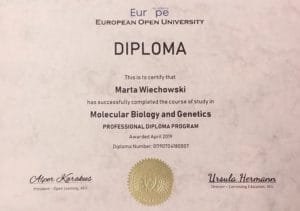Electromagnetic compatibility (EMC) – Part 4-2: Testing and measurement techniques – Electrostatic discharge immunity test
IEC 61000-4-2:2008 relates to the immunity requirements and test methods for electrical and electronic equipment subjected to static electricity discharges, from operators directly, and from personnel to adjacent objects. It additionally defines ranges of test levels which relate to different environmental and installation conditions and establishes test procedures. The object of IEC 61000-4-2:2008 is to establish a common and reproducible basis for evaluating the performance of electrical and electronic equipment when subjected to electrostatic discharges. In addition, it includes electrostatic discharges which may occur frompersonnel to objects near vital equipment. IEC 61000-4-2:2008 defines typical waveform of the discharge current, range of test levels, test equipment, test setup, test procedure, calibration procedure and measurement uncertainty. IEC 61000-4-2:2008 gives specifications for test performed in “laboratories” and “post-installation tests” performed on equipment in the final installation. This second edition cancels and replaces the first edition published in 1995, its amendment 1 (1998) and its amendment 2 (2000) and constitutes a technical revision. It has the status of a basic EMC publication in accordance with IEC Guide 107. The main changes with respect to the first edition of this standard and its amendments are the following:
– the specifications of the target have been extended up to 4 GHz. An example of target matching these requirements is also provided;
– information on radiated fields from human-metal discharge and from ESD generators is provided;
– measurement uncertainty considerations with examples of uncertainty budgets are given too.
Free Certification
Academy Europe presents high-quality formal diplomas, certificates and e-certificates which are formal proof and recognition of accredited online courses. It shows all student’s abilities to learn and achieve high results and is very useful to promote personal career including with CVs, job applications and self improvements.
How can you get your certificate at Academy Europe?
- You must click “complete” link at the end of every lesson of your course after you finish them.
- When you finish all lessons of course, the “finish course” link is going to be active at the end of last lesson.
- When you click the “finish course” link, you will finish your course on Academy Europe officially. Then, “certificate” page of you completed course will be automatically active.
- You can see and download your certificate online after you click on your “certificate” link.
Samples: Horizantal Diploma – Horizantal Certificate – Vertical E-Certificate

Prerequisites
Before you start proceeding with this course on Academy Europe, we are assuming that you have a good aptitude and can think logically. You should want to try something different.
Ideal candidates for the course would typically possess:
– Discipline and attentiveness
– Ability to conduct research
– Ability to perform tasks with speed, efficiency, and accuracy
– Analytical judgment
– Patience to interpret technical/scientific data
– A willingness to learn, roll up your sleeves and work toward your dream!
– A computer, tablet or smartphone and an internet connection
– Basic computer skills
Audience
This course is designed for anyone who wants to understand the fundementals of ISO/IEC Standards and international standardization. Academy Europe does not perform ISO/IEC certifications. Academy Europe and its services are not endorsed, approved or certified by ISO. Academy Europe only refers to ISO in a fair. Academy Europe presents courses to its students about understanding of ISO/IEC standardization.
This course by Academy Europe aims at imparting quality education and training to students.
Academy Europe is dedicated to its students, their specific learning requirements, and their overall learning success.
This course is directed toward a student-centered, independent study, asynchronous learning approach.
After completing this course on Academy Europe, students will get self improvement and promotion in their careers.
This course is based on at least two learning skills which are provided to the users through audio & visuals, videos, verbal presentations and articles, all of which are asynchronized with distance education approach.
About IEC Standards
The IEC and ISO are both independent, non-governmental, not-for-profit organizations that develop and publish fully consensus-based International Standards. The members of the two organizations include government, private and public-private entities. For each organization, there can only be one member per UN-recognized country and every member country, no matter how large or small, has one vote and a say in what goes into the IEC or ISO International Standard. National positions on IEC and ISO International Standards are not necessarily government positions, but should be representative of all interested stakeholders, including government experts. The IEC and ISO promote world trade and economic growth and encourage the development of products, systems and services that are safe, efficient and environmentally friendly.
What is a standard?
A standard is a document that specifies requirements for products, services and/or processes, laying down their required characteristics. This helps ensure the free movement of goods and encourages exports. Standardization promotes efficiency and quality assurance in industry, technology, science and the public sector. It serves to safeguard people and goods and to improve quality in all areas of life. Standards are developed in a consensus-based process organized by a recognized standards body.